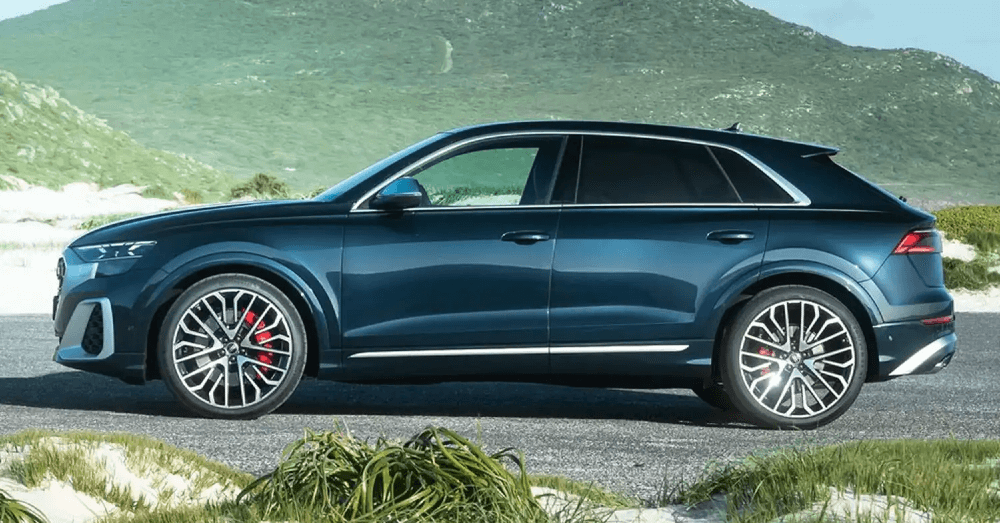The largest Audi SUVs are starting to show their age, but that doesn’t stop them from being some of the most impressive luxury SUVs available.
The Audi Q7 and Q8 models are starting to look a little long in the tooth. This could be a sign of how fast automotive technology is developing, but it also might be a sign that vehicles need to be refreshed sooner than ever before. That said, these two top choices in the Audi lineup have what you want, including sportier and more fun S models that give these SUVs additional power, performance, and driving pleasure on any road.
How old are these Audi SUVs?
The Q7 is a second-generation model, which sounds like it’s been updated with a new generation, but that took place eight years ago in 2016. The SQ7 was added to the lineup in 2020, giving drivers a three-row sporty variant to experience better driving dynamics on any road.
The Q8 is a bit newer, beginning its first generation in 2019. The SQ8 was immediately part of the mix, giving drivers a sporty version of this two-row coupe-like SUV. Unfortunately, five years is a long time in today’s automotive market, and the Q8 could certainly use an upgrade.
Are there any size differences?
These Audi SUVs all ride on the same wheelbase. This is the foundation of the two models, making it easier for Audi to offer several variations. The Q7 and SQ7 are 3.5 inches longer in the rear, giving them enough room for a third-row seat to be placed in the back. These models also have a squared-off rear end that increases the cargo capacity when compared to the Q8 and SQ8 models with their sloping rooflines.
From the outside, the Q7 and SQ7 are the more traditional SUVs, while the Q8 and SQ8 provide a more athletic look.
Older but updated
These top-end Audi SUVs might be a bit old, but they’ve been updated through the years. Sure, there are some items that can only be fixed with a generational change. Still, Audi continues updating these models to ensure they stay relevant and relatively modern.
All four Audis have received new front fascias with upgrade grilled and narrow headlights. The bumpers and diffusers have also been improved for a much better overall look. The sporty versions received digital OLED taillights and the SQ8 has four selectable lighting signatures to offer some amazing looks for other drivers to see this SUV out on any road.
Other upgrades for these four Audi models are new wheel designs, more exterior colors, and trim pieces inside the cabin. The screens, overall interior layout, and design remain consistent, which could be a welcoming part of these SUVs.
The Audi powertrains remain
Audi didn’t change the engine offerings for these SUVs when entering the latest model year. The Q7 still offers a 2.0-liter turbocharged 4-cylinder engine for the 45 TFSI models. This engine produces 261 horsepower and 273 lb-ft of torque.
If you want more power, the 55 TFSI engine is available for the Q7 and standard fare for the Q8. This model gives you a 3.0-liter turbocharged V6 engine that produces 335 horsepower and 369 lb-ft of torque.
Moving up to the SQ7 and SQ8 versions, the engine is upgraded to a 4.0-liter turbocharged V8 that sends 500 horsepower and 568 lb-ft of torque to the wheels.
Every engine mates with an 8-speed automatic transmission and has standard AWD, which is a staple of the Audi lineup.
Will the V8 leave the market?
The most powerful Audi SUVs might lose their beloved V8 engine soon. Many automakers have already ditched V8 engines in favor of twin-turbocharged V6 models that produce more power than the V8. This could be the change we see when these Audi models transition to a new generation, which should happen in the next couple of years.
Drive mode letdown
All four SUVs have drive modes to set the vehicles for the desired driving experience. Unfortunately, the Dynamic drive mode could be a bit of a disappointment for some drivers. This mode is meant for some enthusiastic driving manners, but the transmission doesn’t downshift well with the braking, which means the SQ7 and SQ8 can bog down when exiting the corner instead of giving the driver more power where they want it.
The steering also feels a little numb when pushing these SUVs hard. This steering is great when out on a country road, but if you want to push hard on a track, it’s a bit of a disappointment.
Hopefully, when these Audi SUVs head into the next generation, they will include much more active driving dynamics for modes and models meant for high-performance driving.
This post may contain affiliate links. Meaning a commission is given should you decide to make a purchase through these links, at no cost to you. All products shown are researched and tested to give an accurate review for you.
